A playlist of the music for Mass on Low Sunday/Dominica in Albis/Quasimodo Sunday/Octave of Easter
The chant can be viewed here
Musician, teacher, blogger
A playlist of the music for Mass on Low Sunday/Dominica in Albis/Quasimodo Sunday/Octave of Easter
The chant can be viewed here
Following my series on how to celebrate the pre-1955 Holy Week liturgy at home, here are some ideas for Holy Thursday.
The ceremonies of Holy Saturday are performed on Holy Saturday Morning. Because these are long and because many baptisms were performed after the blessing of the font, I suggest splitting the liturgy in two
We plan to spend the time in the afternoon making Easter decorations.
Some pointers for adapting the liturgy in the booklet.
Part 1- Morning
Part 2- Evening
Once the children are in bed, it is time to decorate the house, prepare the Easter lunch and hide the eggs for the Easter egg hunt!

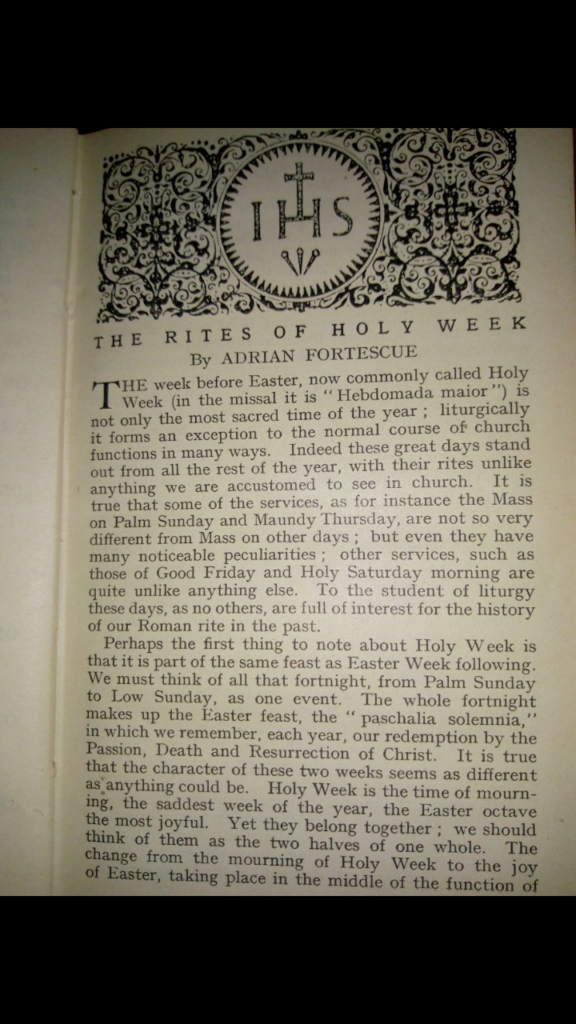
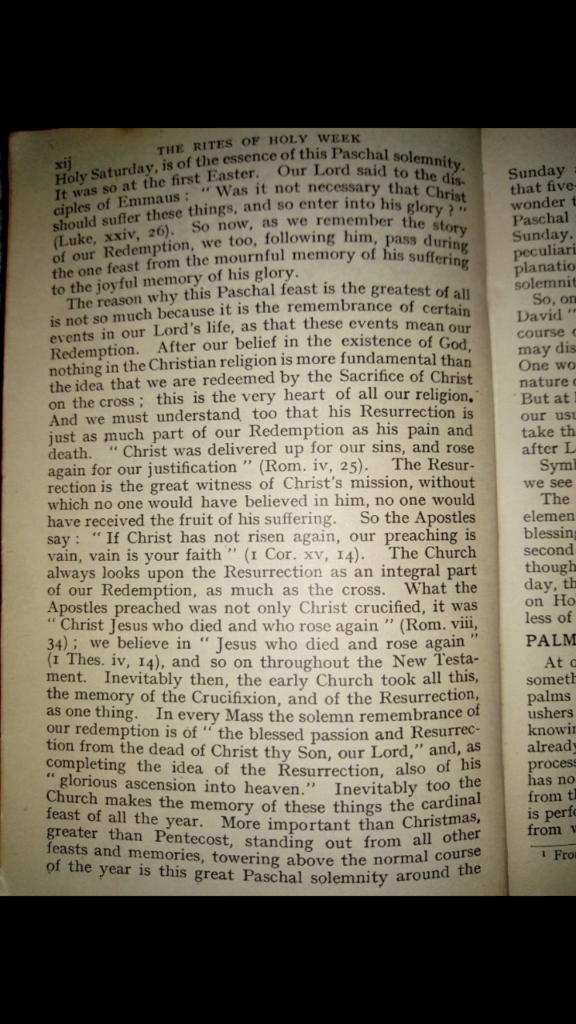



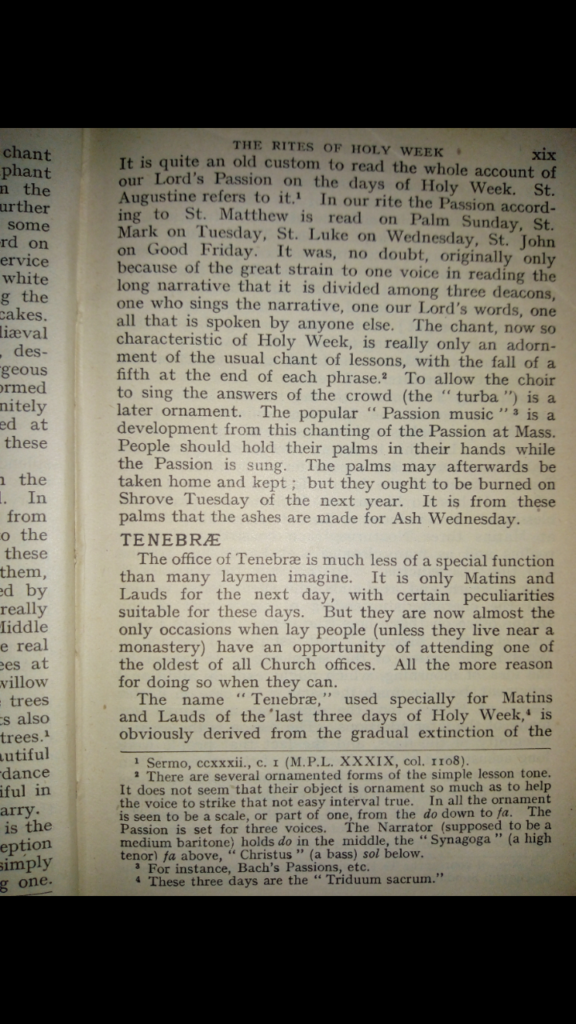
We find ourselves in a situation where we need to keep the liturgies of Holy Week at home. This sort of situation is not unprecedented. My thoughts are drawn to the recusant Catholics of the Anglican persecution, the true Church in China and other underground Christians and even His Eminence Cardinal Pell who has been denied the right to offer the Holy Sacrifice for many months.
Rather than becoming angry and frustrated, let us resign ourselves to the permissive will of God as did Our Lady during the Passion. We should make the most of this opportunity to grow in our understanding and practice of the faith.
Collect for Saturday in Passion Week
We beseech Thee, O Lord, may Thy devoted people grow in the spirit of pious devotion, that learned in the holy rites, they may become the more pleasing to Thy majesty as they abound in spiritual gifts. Through Christ Our Lord…
In the Pearce household, we have greatly benefited from praying in union with livestreamed Masses and we are grateful to all priests who have made the liturgy available to us, especially the FSSP at Livemass.net. For Holy Week, however, we have decided not to livestream Mass but to do what we can to be present to the liturgy in our own home- a time for us to up our ‘Ecclesia Domestica’ game. (For that is our WiFi name after all!)
Being church musicians we are fortunate that we can sing most of the liturgy at home and have chosen (since no permission is required from Rome for a Missa Sicca or ‘Dry Mass‘) that we will celebrate according to the traditional Holy Week liturgy from before the reforms of 1955 which anticipated the promulgation of the Novus Ordo. The timing of these liturgies is more toddler friendly too!
Below I have provided notes on how this can be done at home. Some points to consider:
Texts for each liturgy can be found here by selecting rubrics pre-1955 and selecting ‘Sancta Missa’ at the top of the page. Another option would be to print the relevant pages from a pre-1955 Missal such as the Fr Lasance Missal.
I will post the same sort of resource for the Sacred Triduum in due course.
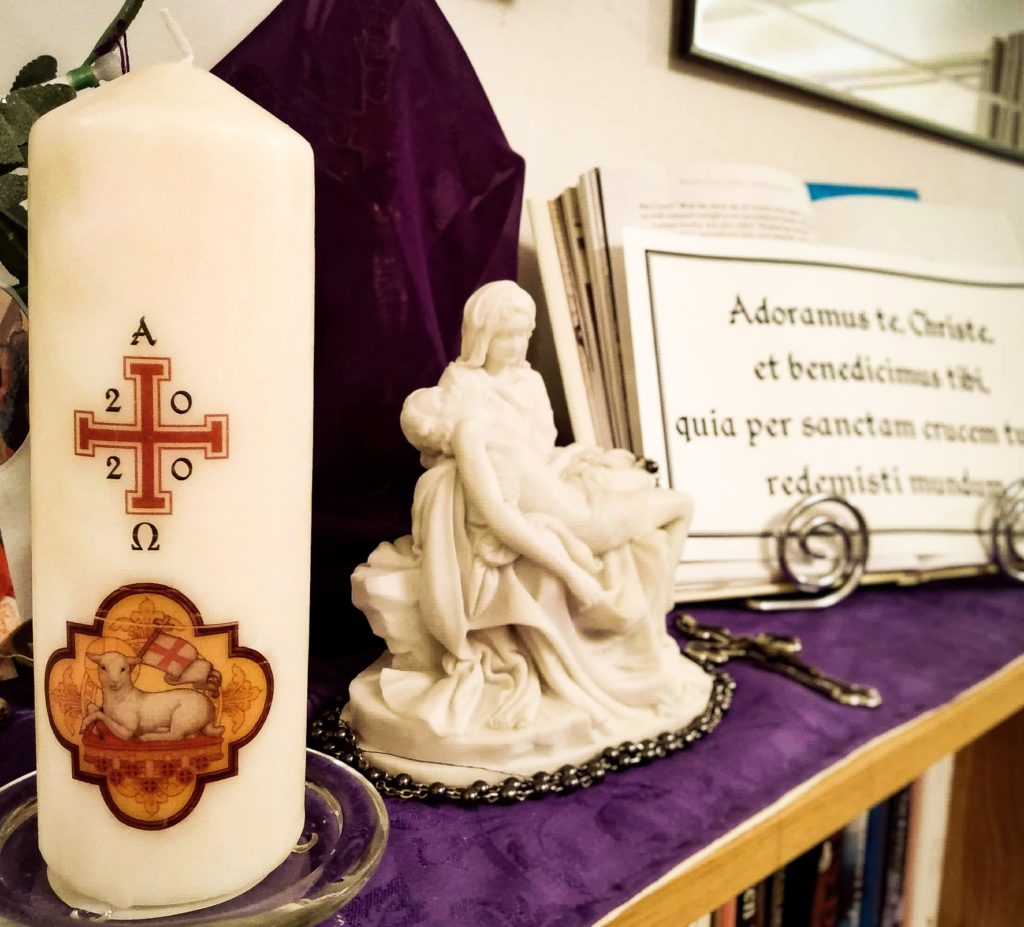
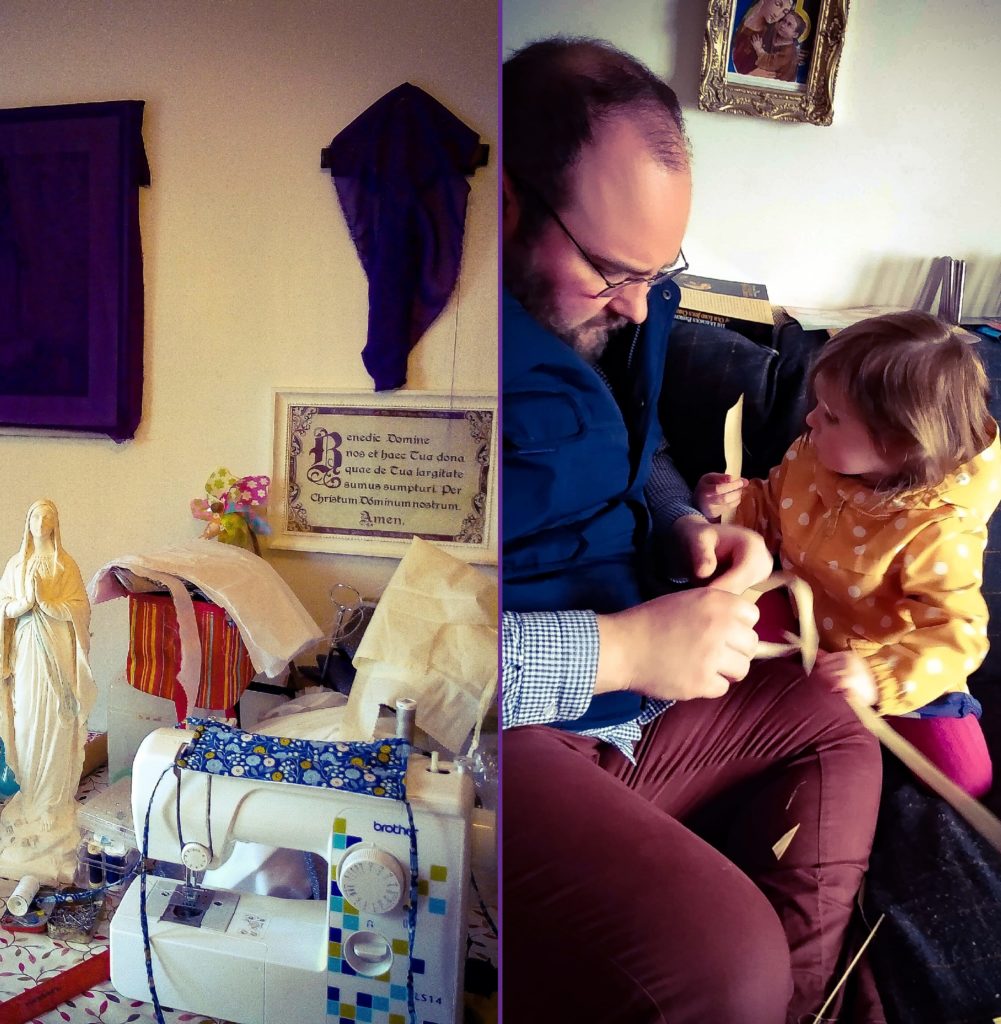
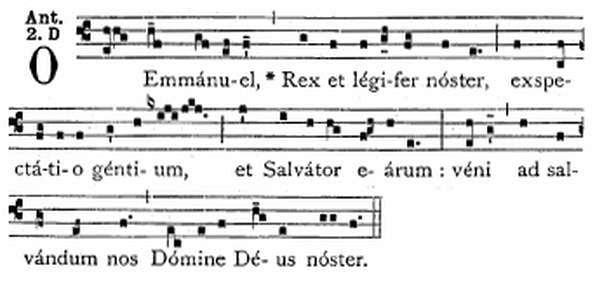
O Emmanuel (December 23)
O Emmanuel (Isaiah 7:14; 8:8; Luke 1:31-33),
our King and Lawgiver (Genesis 49:10; cf. Ezekiel 21:32), the Expected of the nations and their Savior (Isa 33:22): Come, and save us, O Lord our God.
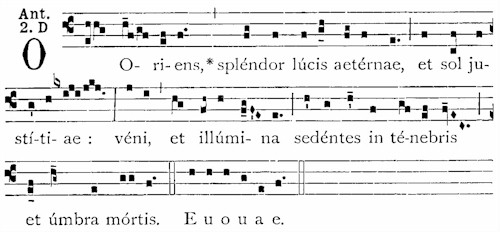
O Oriens or O Rising Dawn or Morning Star (December 21)
O Rising Dawn, (Jer 23:5; Zechariah 3:8; 6:12),
Radiance of the Light eternal (Habakkuk 3:4; Wisdom 7:26; Hebrews 1:3) and Sun of Justice (Malachi 3:20): * come, and enlighten those who sit in darkness and in the shadow of death (Ps 107:10; Lk 1:78).
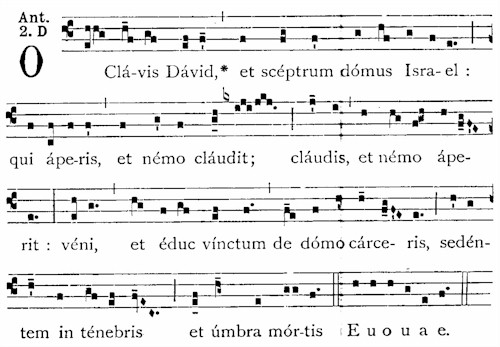
O Clavis David or O Key of David (December 20)
O Key of David, (Isaiah 22:22; Revelation 3:7)
and Scepter of the house of Israel (Numbers 24:17): You open and no man closes; you close and no man opens (Isaiah 22:22). * Come, and deliver him from the chains of prison who sits in darkness and in the shadow of death (Ps 107:10).
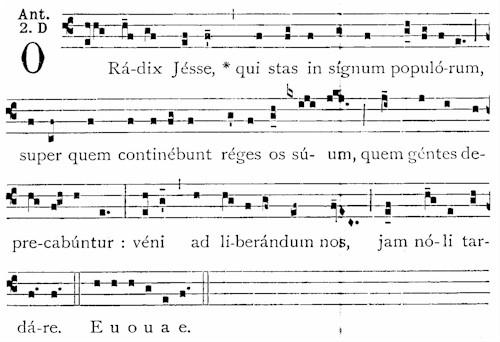
O Radix Jesse or O Root of Jesse (December 19)
O Root of Jesse, (Isaiah 11:1)
You stand for the ensign of mankind (Isaiah 11:10); before You kings shall keep silence and to You all nations shall have recourse (Isaiah 52:15). * Come, save us, and do not delay (Habakkuk 2:3).
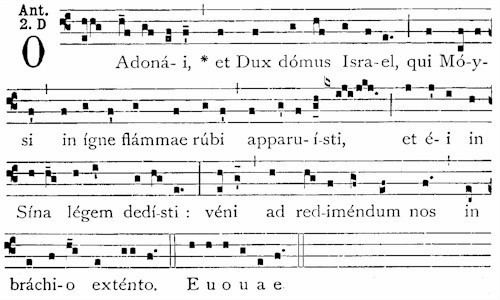
O Adonai or O Lord and Ruler (December 18)
O Adonai (Exod 3:14)
and Ruler of the house of Israel (Matt 2:6; Micah 5:1; 2 Sam 5:2), You appeared to Moses in the fire of the burning bush (Exod 3:2) and on Mount Sinai gave him Your Law (Exod 20). * Come, and with an outstretched arm redeem us (Jeremiah 32:21).
A few months ago Mrs Pearce and I decided that to add to our family evening devotions, we would begin commemorating the feast of the day by opening our family rosary by singing the Magnificat antiphon and Collect of the day. We are very much into liturgical living and our meals, house decorations and family activities mark out the feasts and fasts of the church calendar. This is especially important for children who also learn a lot through practice and culture rather than only academic learning.
This practice really comes into its own in the next few days when the Church sets before us a different Magnificat antiphon each day which take typological titles of Jesus relating to the incarnation. These are a reflection bon the expectations that the people of Israel had of the coming Messiah and in the Church we reflect on these in the knowledge of how Christ fulfilled them each one begins with ‘O’ and so they are called the ‘O’ Antiphons.
The first is sung at Vespers on the 17th of December and is O Sapientia. We are reminded that, as the last Gospel of the Mass presents, Jesus is the eternal Logos, the Word or Divine Mind made flesh. He is Wisdom incarnate.
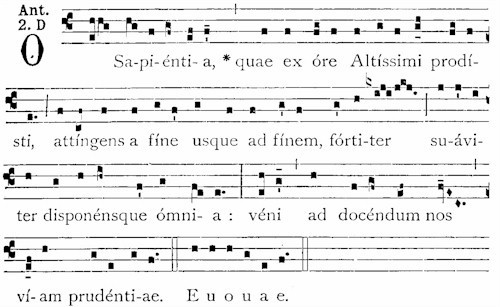
O Sapientia or O Wisdom (December 17)
O Wisdom (Sirach 24:3),
You came forth from the mouth of the Most High (Sirach 24:3), and reaching from beginning to end You ordered all things mightily and sweetly (Wisdom 8:1). * Come, and teach us the way of prudence (Isaiah 40:14).